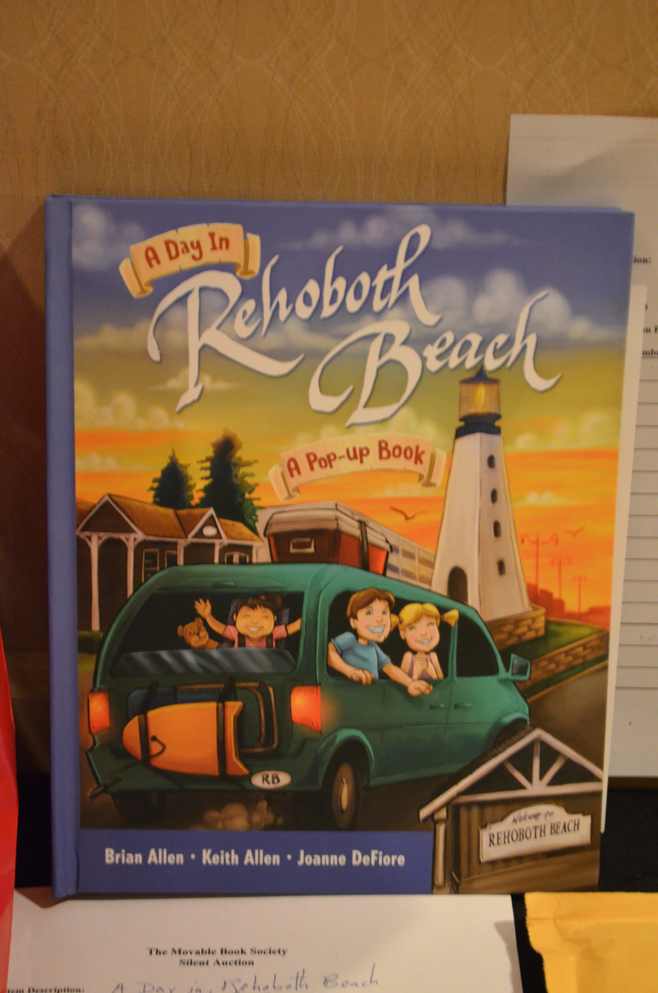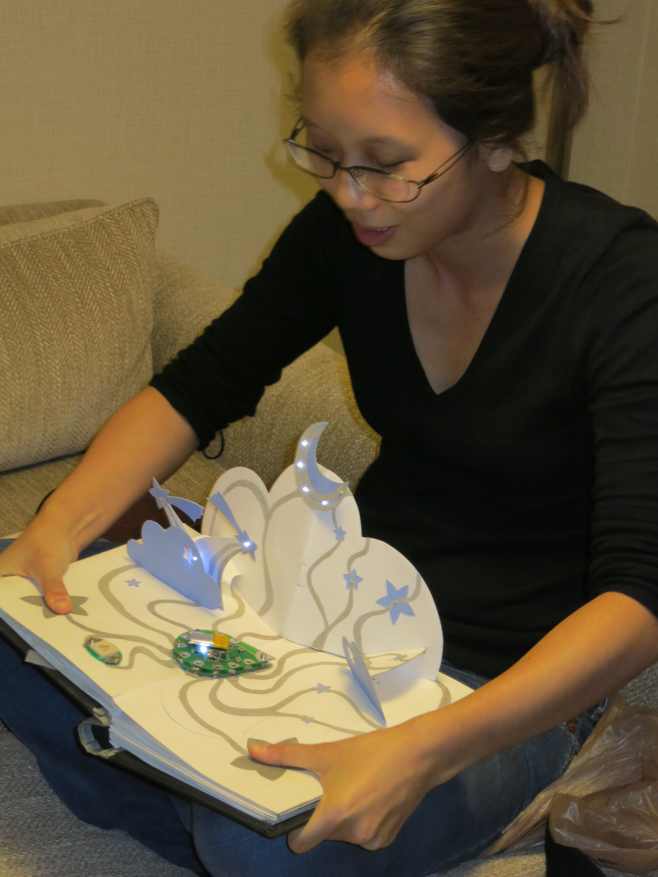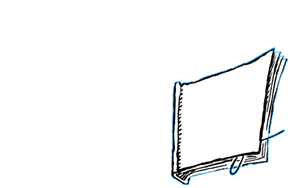An Electrifying Conference
by Ellen G.K. Rubin
“The value of an idea lies in using it.”—Thomas A. Edison
Thomas Alva Edison [1847–1931] harnessed electricity for practical use. I can’t wait to see how paper engineers and book artists use the technologies presented at the Movable Society Conference in Salt Lake City (SLC), Utah this past September 27-29, 2012. From its very start, this 9th Conference was abuzz with activity and industry; Salt Lake’s symbol is the beehive. Busy Bees. Get it?
Was it the sheer exuberance of getting together or the group of young paper engineers? Or was it the ‘couples’ two-by-two? Husbands and wives. Mothers and daughters. Grandma and granddaughter. Artist and intern. Paper engineer or creative director and their staffs. They formed a veritable Noah’s ark from across the globe-Canada, England, Italy, Australia. All were assembled to receive The Word. What is the future of pop-up books?
After a buffet dinner, Marsha Apgood, SLC native, delivered the Cliff Notes version of SLC’s history, Ann Montanaro Staples, our President and also an SLC native, gave us a warm welcome then got down to the business of directing us to the buses that would take us to The City Library. There we would have time to explore Ann’s exhibit, Pop-ups: Books That Spring to Life, followed by a lecture and book signing by Robert Sabuda, and a reception.

The City Library, left, like many SLC buildings, was a thoroughly modern affair with soaring panels of glass and a glass enclosed elevator. The Library’s finances are supported in part by small book-related shops on the ground floor. We traveled to the 4th floor and walked into rooms brightly colored by pop-up books in tall vitrines. The books, imaginatively, thematically, and sometimes precariously perched on top of each other, filled two rooms.
A third room had wall bookcases. Robert Sabuda was heard to exclaim, “I’ve never seen a couple of these!” Several books of an adult nature, like The Pop-up Book of Sex and The Kama Sutra were not displayed openly. Of course, the Wicked Willie book is in flagrante. Were the books closed due to Mormon or librarian conservatism?
“I have not failed. I’ve just found 10,000 ways that won’t work.” ― Thomas A. Edison
The large auditorium was near full when our group arrived. Robert’s lecture was open to the public, a segment of the Author Live series. Robert began with a brief overview of the long history of pop-up and movable books beginning with Matthew Paris, the 13th century English monk who created the volvelle, used as a calendar. From there Robert worked his way into the 20th century with examples of Bookano books-the first true pop-ups seen in 360 degrees.
Robert talked at length about receiving Kubašta’s Cinderella for his birthday. It was a milestone for Sabuda. “This paper engineer and artist stands apart from all the others,” Robert declared. “You know his craft by the ‘breadth and beauty of his illustrations.’” The pull-tabs are “so superbly simple” and “the paper engineering works perfectly with the illustrations. Simply magical.” Kubašta’s characters had beauty and dignity but could still retain humor.
Sabuda then segued into how he became a paper engineer beginning with his roots in Michigan and a father who was a carpenter. He lauded his art teachers for encouraging both his talent and his going to Pratt to study. In his junior year, Robert worked for a book publisher and based on that experience, he decided to be children’s book illustrator. A printmaker first, Robert spoke of his love of paper “its touch, weight, color and sound it makes when it unrolls.” Examples of his work from cut and dyed paper to mosaics was, well, awesome. Even those of us who are so familiar with his work felt a new appreciation for his artistry.
Repeatedly, Robert stressed, “How do I make these books? By trial and error.” He starts with white paper, scissors, and tape and then refines his work, over and over again. Starting with a manuscript “playing scenes over and over in [his] head,” he uses basic tools. “Paper engineering is just hope,” he confesses. “If it moves, doesn’t break, and stays inside the pages, it’s a success.”

With slides and video, Robert took us through the laborious process of breaking down the mock-up to each part, creating die-lines, and putting all the pieces, like a puzzle, on a nesting sheet. He ‘took’ us to China to see the printing and assembling process. The hand-made dies, he told us, have to withstand 100,000 impressions. Twenty-five thousand books can be assembled in a week.
Robert is grateful that he’s a bookmaker. He has just finished making The Little Mermaid. Not surprisingly, Robert’s calendar is booked for the next few years designing pop-ups. We had to walk around the long line of Sabuda fans to get to the lovely spread put out by the City Library. This was the first real opportunity for MBS members to mingle and munch. I was so preoccupied with my conversation with PE, Becca Zerkin, I missed the bus back to the hotel. I loitered on the street corner waiting for other latecomers to gather. We walked back to the Hilton together.
“There are no rules here — we’re trying to accomplish something.” ― Thomas A. Edison
In the hotel lobby a small group was trying to find a way to extend the evening. I offered my room. About 10 of us convened in the little living room. Larry Seidman and I were the elder statesmen. Inexplicably, Uncle Larry did not fill his pockets with tiny pop-up goodies this year. The room thrummed with young blood. I was excited to hear and see what the next generation would talk about and show us. Kyle, recently back from Germany, had produced a facsimile of a Biedermeier card, love tokens, like baseball cards, with extraordinarily intricate movables. Larry has been campaigning for years to produce a line of facsimile greeting cards. The Biedermeiers would be a good place to begin.


Keith Allen, a paper engineer for American Greeting Cards in Cleveland, OH, shared with us his self-published pop-up book, A Day in Rehoboth Beach, Delaware. The book was written by his grandmother and illustrated by his brother. Talk about a family venture! Two thousand copies were produced in China and are completely sold out. A second printing is expected. Asked if he would do another book, Keith enthusiastically said, “Yes” but with the same vehemence continued, “but not with my family.” Enough said.
Shelby Arnold, a paper engineer working in Robert Sabuda’s studio, reluctantly brought out a concertina with multiple pop-ups. She was in the process of laboriously covering the book with minutely fine black line designs. The book is arranged so that the illustrations wrap around and continue on the reverse side. It is a bold and impressive effort. Next was Jie Qi [gee key] whose work I had seen on YouTube under Electronic Popables.
This presentation was a precursor to the one to be given to the membership tomorrow that I will describe fully later. But be prepared to fasten your seat belts!

Poor Kim Yoojin, a freshman at the Maryland Institute College of Art, was so reluctant to follow Jie and the enthusiastic response Jie elicited.
Shy, and fantastically skilled, Kim also wowed us with her high school projects. Her work had a grace, intricacy, and elegance any collector would want on their shelves. She’s another young PE to watch. Eyeing all these presentations, Larry kept looking for ways to make each of the presenter’s creations commercial. Turning great pop-up spreads into greeting cards or recreating old cards, like the Biedermeiers, is a great idea. Any backers out there?

